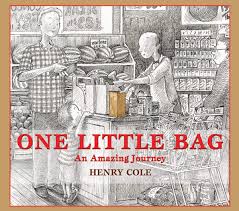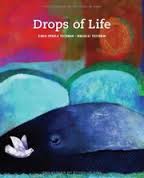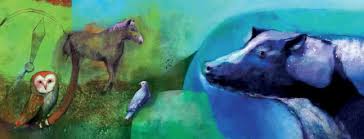An absolutely charming wordless picture book describing that long life of our main character – a paper bag! Henry Cole, at his best, delights us with the very beginning of a life of a bag, as a tree. The picture shows the tree looking vibrant and content in a forest, and then through the logging process, milling, manufacturing, and into a grocery story.From there, it really becomes loved in a family home and used as a lunch bag for a young boy to carry his sandwiches to school.His father draws a small red heart on the bag, which is later used with the boy’s flashlight at night, goes camping and holds the marshmellows, follows him as he ages and holds a ring he gives to his love, ect. By the end of our story the bag is appropriately used to hold a small seedling which is planted back into the earth by our main character and his son.
A lovely story for earthday, recycle/reuse, over consumption, generational stories, lifecycle and more. Recommended book for your library!
Here is Henry Cole’s website: https://www.henrycole.net/main.php



